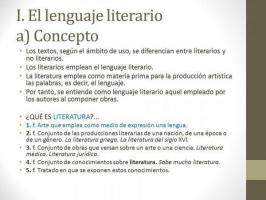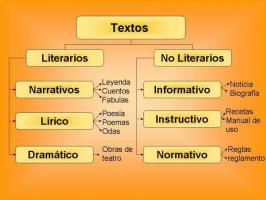Guide to a literary text commentary

The commentary on literary texts It is an exercise through which one reaches a deep knowledge of a literary work as well as the historical-literary context that surrounds it. Through the text commentary it is possible to carry out an analytical, detailed and in-depth reading of the literary work, which allows us to understand in a more detailed and exhaustively the why of that literary work, what the author wanted to convey to us through it or why that work and not another is a classic within the History of the Literature.
Next, in a Teacher we propose you a sketch of a guide to a literary text commentary, with some examples, so that it can serve as a guideline when starting your exercise. Cheer up!
The first thing to keep in mind is the importance of understand what is being read. For this reason, it is essential that you take a few minutes to read carefully and carefully the proposed text for the comment.
If necessary, read it two or three times and use the dictionary to find all those words you do not know. Once you have gotten the general idea of the text and are able to briefly state what it is about, you are ready to continue with the comment.
The literary analysis of text content to comment is carried out based on three aspects:
Literary text theme
To do a literary text commentary we should talk about the issue that should be summarized in a single short sentence. Normally it revolves around a universal feeling (death, pain, love disappointment, loneliness... etc.) To correctly enunciate the subject it is very important to have previously made a careful reading of the text.
Argument from literary text
It is the summary of the main points of the text that allow us to establish the theme; for example, if we are commenting on the following text by Calderón de la Barca:
- These, which were pomp and joy, / Waking up the morning dawning, / In the afternoon they will be vain pity, / Sleeping in the arms of the cold night. / This nuance, which defies the sky, / Striped iris of gold, snow and scarlet, / It will be an example of human life: / So much is undertaken in one day! / To bloom the roses got up early / And to grow old they flourished: / Cradle and grave in a button found. / Such men their fortunes saw: / In one day they were born and atoned; / That past the centuries, hours were.
We can say that it is a sonnet that reflects the topic tempus fugit, how life passes quickly, without our barely realizing it, and then death comes. And to support our claim, we can cite, as an example, a verse from the poem.
Structure of the literary text
That is, we must indicate how the content is distributed throughout the fragment: in paragraphs, in stanzas, in parliaments of different characters, etc. Also, as far as possible, if we are able to locate the fragment within the work to which it belongs, it is advisable to mention it when dealing with the structure of the text.

The shape analysis is perhaps one of the most complex sections of the commentary of the literary text, since it is now when the description of literary resources present in the text.
They are first identified, classified and, lastly, an attempt is made to find out why the author uses that particular rhetorical figure and what he wants to convey to us through the use of it. To do all this, the analysis of rhetorical devices is organized by dividing them into four categories:
- Phonetic resources: Alliteration, onomatopoeia, paronomasia..., etc.
- Morphological resources: How adjectives are used, through which the author transmits his subjective vision of him, if there is an abundance of verbs that indicates a frenzied activity or, on the contrary, they hardly appear and, therefore, the text has a slower and more descriptive character, etc.
- Syntactic resources: anaphora, asyndeton, calambur, hyperbaton, enumeration, polysyndeton or reduplication are some of the stylistic resources that should be analyzed on the syntactic plane of the text.
- Semantic resources: comparison, hyperbole, metaphor, personification, synesthesia..., etc.
In this other lesson from a teacher we discover a complete list of literary resources.
By last, to finish the commentary of the literary text, it is necessary to make a conclusion in which the most relevant aspects mentioned above in the comment are included, as well as a brief critical assessment of the fragment, the work and, if you want, also the author.
The essential thing is to be able to bring together in the same paragraph the ideas that we have extracted from the text and our personal impression from them; that is, to serve as our own analysis of the fragment to establish a critical appraisal of the text.



